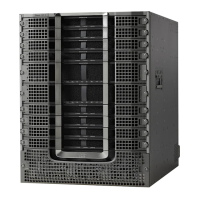Packet Header Suppression Rules
Because many data and real-time applications may use fixed values in their packet header fields, DOCSIS
1.1 supports PHS to suppress the duplicate portions of the packet headers when a group of packets is transmitted
during a session. Each service flow can support a separate set of PHS rules that determine which parts of the
header are suppressed.
When PHS is being used, the transmitting CMTS suppresses the specified headers in all the packets for that
service flow. The receiving CMTS then restores the missing headers before forwarding the packets on to their
ultimate destination.
Proper use of PHS can increase the efficiency of packetized transmissions, especially for real-time data that
is encapsulated by other protocols, such as VoIP traffic.
Quality of Service Comparison
This section summarizes the differences in QoS between DOCSIS 1.0, DOCSIS 1.0+, and DOCSIS 1.1
networks.
Cisco CMTS routers can transparently interoperate with cable modems running DOCSIS 1.0, DOCSIS
1.0+ extensions, or DOCSIS 1.1. If a cable modem indicates at system initialization that it is DOCSIS
1.1-capable, the Cisco CMTS router uses the DOCSIS 1.1 features. If the cable modem is not DOCSIS
1.1-capable, but does support the DOCSIS 1.0+ QoS extensions, the Cisco CMTS automatically supports
the cable modem's requests for dynamic services. Otherwise, the cable modem is treated as a DOCSIS
1.0 device.
Note
DOCSIS 1.0
DOCSIS1.0 uses a static QoS model that is based on a class of service (CoS) that is preprovisioned in the
DOCSIS configuration file that is downloaded to the cable modem. The CoS is a bidirectional QoS profile
that applies to both the upstream and downstream directions, and that has limited control, such as peak rate
limits in either direction, and relative priority on the upstream.
DOCSIS 1.0 defines the concept of a service identifier (SID), which identifies the cable modems that are
allowed to transmit on the network. In DOCSIS 1.0 networks, each cable modem is assigned only one SID
for both the upstream and downstream directions, creating a one-to-one correspondence between a cable
modem and its SID. All traffic originating from, or destined for, a cable modem is mapped to that particular
SID.
Typically, a DOCSIS 1.0 cable modem has one CoS and treats all traffic the same, which means that data
traffic on a cable modem can interfere with the quality of a voice call in progress. The CMTS, however, has
a limited ability to prioritize downstream traffic based on IP precedent type-of-service (ToS) bits.
For example, voice calls using higher IP precedence bits receive a higher queueing priority (but without a
guaranteed bandwidth or rate of service). A DOCSIS 1.0 cable modem could increase voice call quality by
permanently reserving bandwidth for voice calls, but then that bandwidth would be wasted whenever a voice
call is not in progress.
Cisco cBR Series Converged Broadband Routers Quality of Services Configuration Guide for Cisco IOS XE Fuji
16.7.x
41
DOCSIS 1.1 for the Cisco CMTS Routers
DOCSIS 1.1 Quality of Service

